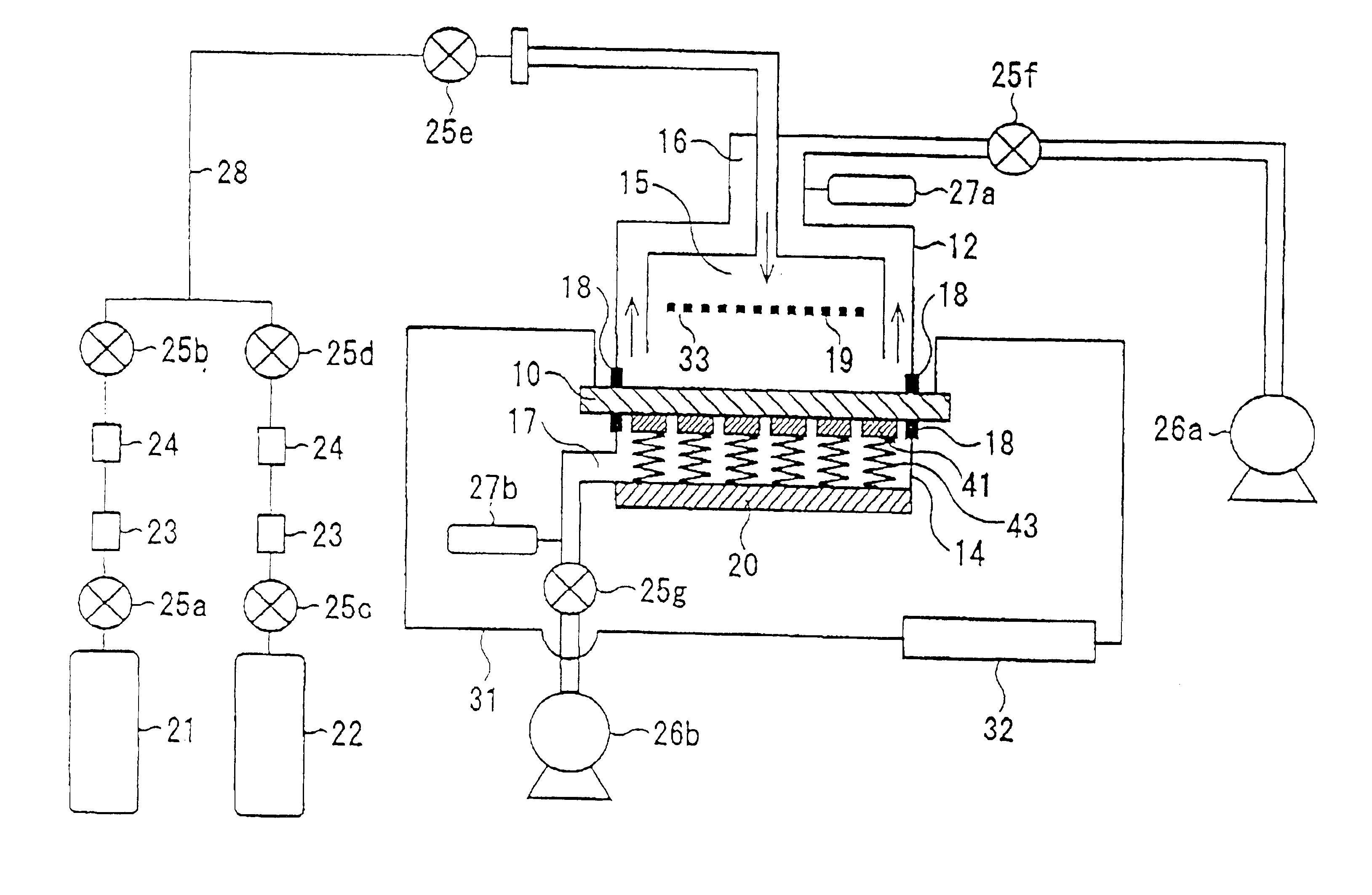Apparatus for producing electron source
a technology for producing electron sources and manufacturing apparatuses, applied in the manufacture of electrode systems, electrode system manufacturing, tube/lamp factory adjustment, etc., can solve the problem of requiring a long time for second manufacturing methods, and achieve the effect of convenient downsizing and operation
- Summary
- Abstract
- Description
- Claims
- Application Information
AI Technical Summary
Benefits of technology
Problems solved by technology
Method used
Image
Examples
example 1
This example manufactures an electron source shown in FIG. 24 having a plurality of surface-conduction type electron-emitting devices shown in FIGS. 22 and 23 by using the manufacturing apparatus according to the present invention. In FIGS. 22 to 24, reference numeral 101 denotes a substrate; 2 and 3, device electrodes; 4, a conductive film; 29, a carbon film; and 5, a gap in the carbon films 29. Reference symbol G denotes a gap G in the conductive film 4. Pt paste was printed by an offset printing method on a glass substrate (350.times.300 mm in size and 5 mm in thickness) having an SiO.sub.2 layer, and heated and baked to form device electrodes 2 and 3 shown in FIG. 25 with a thickness of 50 nm. Ag paste was printed by a screen printing method, and heated and baked to form X-direction wiring lines 7 (240 lines) and Y-direction wiring lines 8 (720 lines) shown in FIG. 25. At the intersections of the X-direction wiring lines 7 and Y-direction wiring lines 8, insulating pastes were p...
example 2
An electron source substrate 10 shown in FIG. 25 that was identical to the substrate 10 in Example 1 was fabricated and set in the manufacturing apparatus of FIG. 1. In this example, a gas mixture containing an organic substance was heated to 80.degree. C. by a heater arranged around a pipe 28, and then introduced into a vacuum vessel 12. The electron source substrate 10 was heated via a heat conduction member 41 using a heater 20 inside a support 11 to set the substrate temperature to 80.degree. C. Except for this, activation processing was executed similarly to Example 1, thereby fabricating an electron source.
Carbon films 29 were formed via a gap 5 on an electron-emitting device having undergone activation processing, as shown in FIGS. 23 and 24.
Similar to Example 1, this example could perform activation processing within a short time. The device current If at the end of activation processing was measured similarly to Example 1 to find that the device current If increased about 1...
example 3
An electron source was fabricated by the same method as in Example 1 except that the manufacturing apparatus shown in FIG. 3 was used for an electron source substrate 10 shown in FIG. 25 that was identical to the substrate 10 in Example 1, and silicone oil was used as a heat conduction member.
In the apparatus of this example, holes (not shown) serving as both air holes and viscous liquid substance discharge holes were formed at positions on an almost diagonal line outside the device electrode region so as not to leave air between the lower surface of the substrate and a support in injecting silicone oil below the substrate using a viscous liquid substance inlet pipe. The device current value at the end of activation processing was the same as the result of Example 1.
PUM
| Property | Measurement | Unit |
|---|---|---|
| pressure | aaaaa | aaaaa |
| voltage | aaaaa | aaaaa |
| thickness | aaaaa | aaaaa |
Abstract
Description
Claims
Application Information
 Login to View More
Login to View More - R&D
- Intellectual Property
- Life Sciences
- Materials
- Tech Scout
- Unparalleled Data Quality
- Higher Quality Content
- 60% Fewer Hallucinations
Browse by: Latest US Patents, China's latest patents, Technical Efficacy Thesaurus, Application Domain, Technology Topic, Popular Technical Reports.
© 2025 PatSnap. All rights reserved.Legal|Privacy policy|Modern Slavery Act Transparency Statement|Sitemap|About US| Contact US: help@patsnap.com



